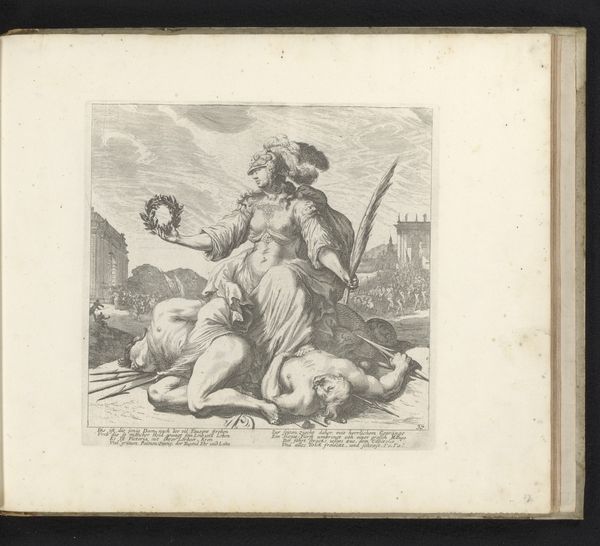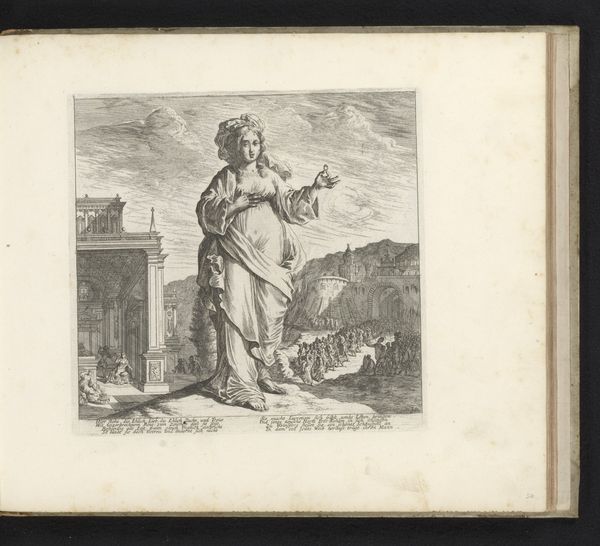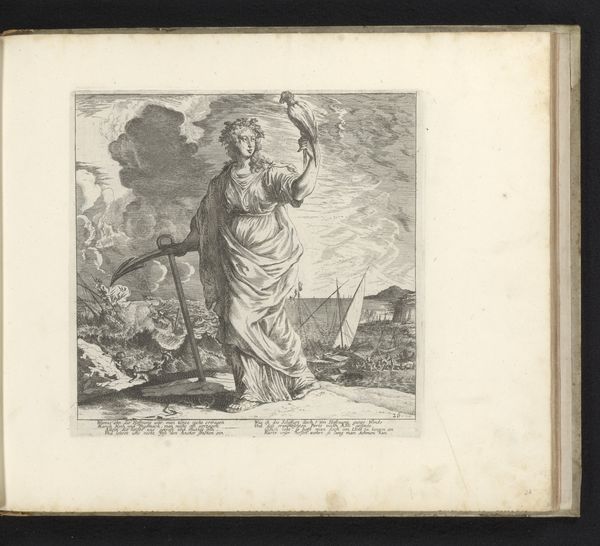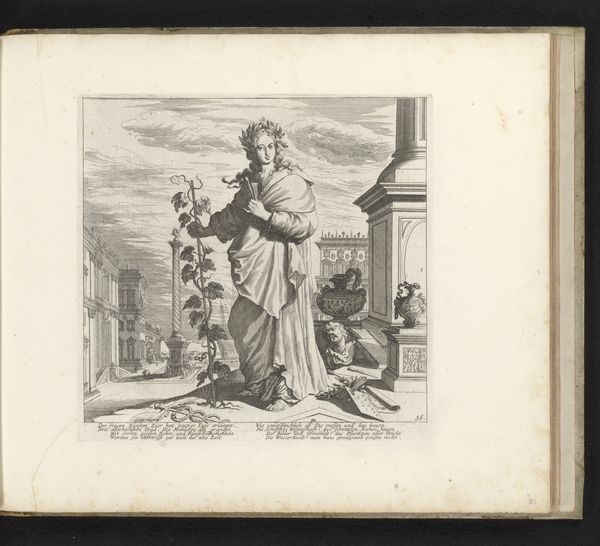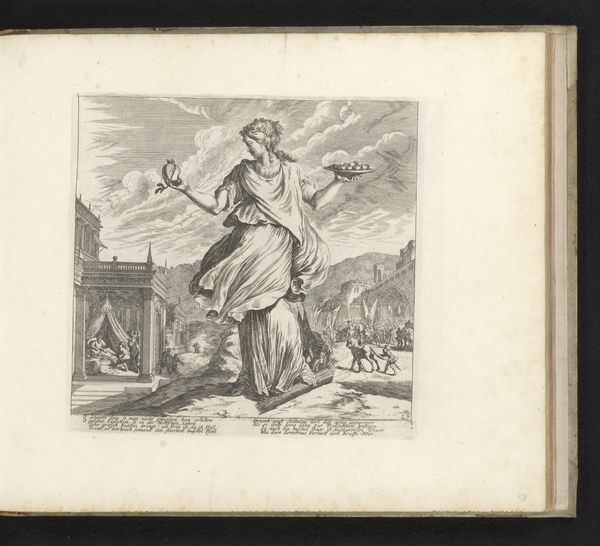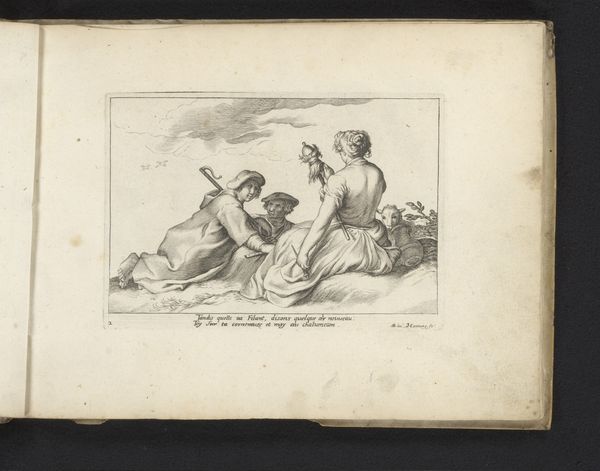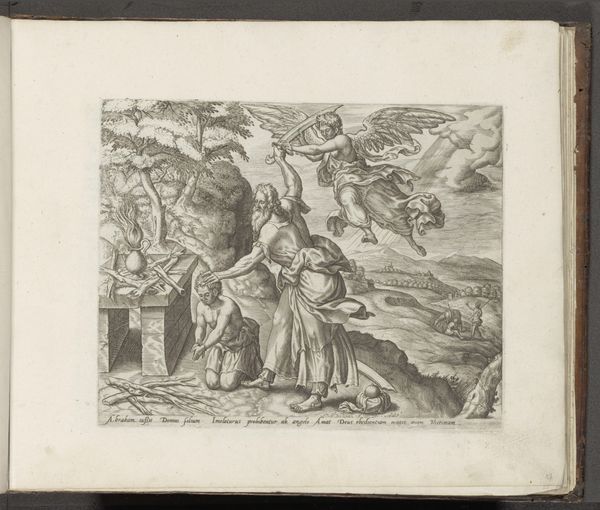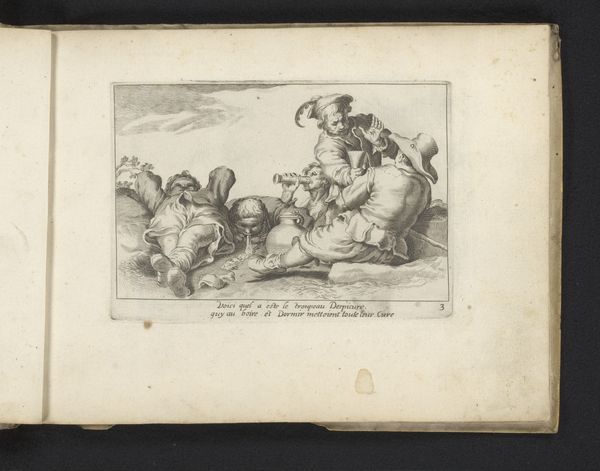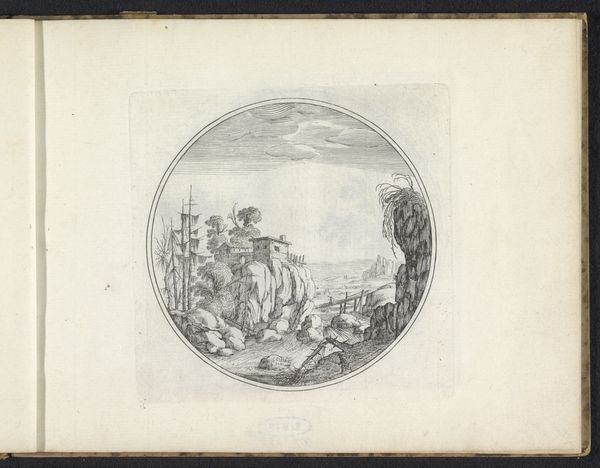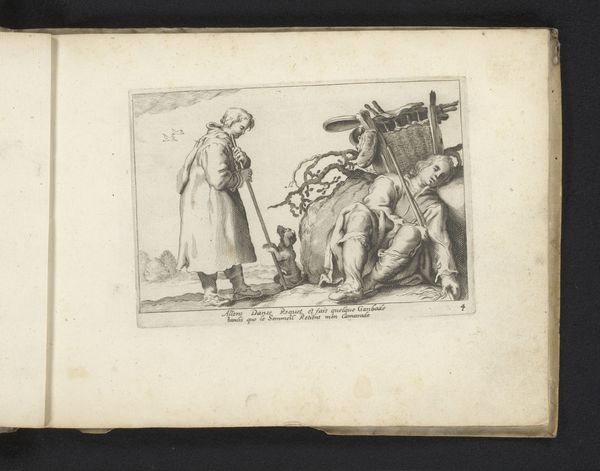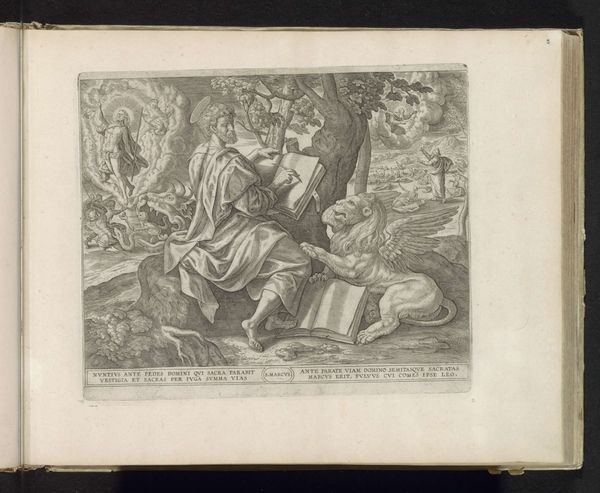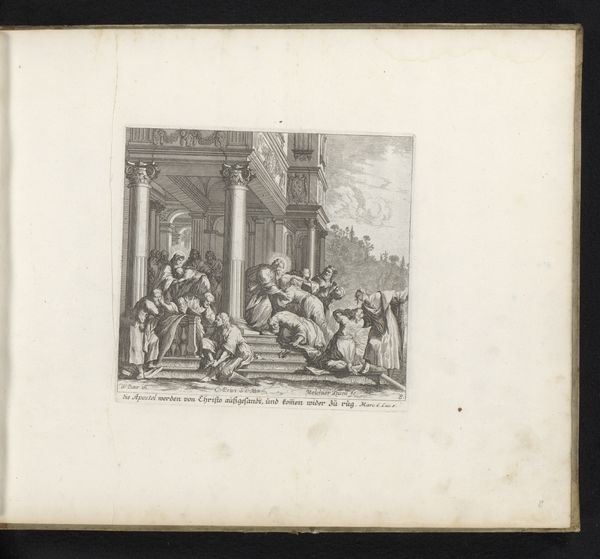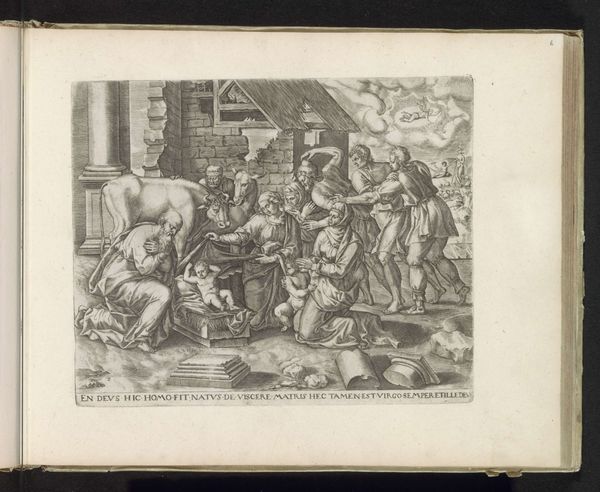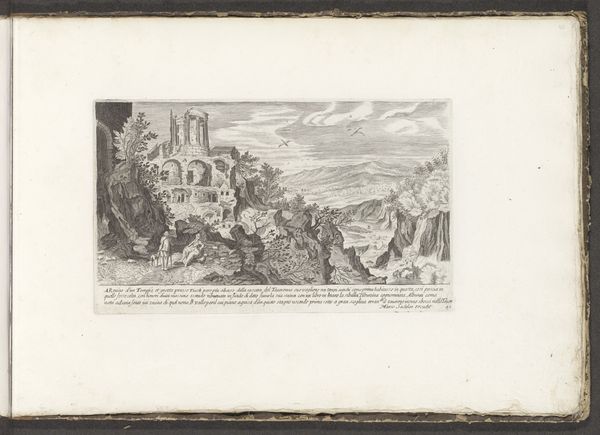
print, engraving
#
allegory
#
baroque
# print
#
figuration
#
line
#
history-painting
#
engraving
Dimensions: height 220 mm, width 225 mm
Copyright: Rijks Museum: Open Domain
Curator: This engraving is "Allegory of the Promise of Love," created between 1670 and 1682 by Melchior Küsel. It's currently housed here at the Rijksmuseum. Editor: It's quite striking, even in its miniature scale. The linear quality really amplifies the dramatic poses and the density of figures. I’m immediately drawn to the almost theatrical central scene contrasted with the distant, processional crowd. Curator: Indeed. Note the method—engraving—demands precision and reproducibility, aligning with the Baroque era's patronage system where artists relied on commissions. Also, consider the political symbolism often interwoven in such allegories. The promise of love could be mirroring a need for dynastic alliance through arranged marriage. Editor: Looking closely, the composition guides the eye, starting with Cupid atop that ornamented pedestal, then to the central figures around the altar—the kneeling posture and offering suggest deep supplication—and outward toward the hazy landscape filled with figures, which appears more broadly symbolic, perhaps representing societal expectations or influence. The interplay between the crisp foreground and the blurred distance really is the essence of the print here. Curator: That brings me to consider that engravings, as printed matter, circulated widely and contributed to the era’s collective imaginary of love, obligation, and status. We should reflect on who commissioned this, to whom it was intended to be delivered, and by whom, reflecting not only the social aspects of these types of commissioned prints, but also how society operated back then. Editor: Exactly, and perhaps how those processes informed or even dictated visual language. Here, even though the themes are very clear—sacrifice, offering—the materials still invite subjective interpretation. Look at the cloudscape, a kind of stage setting. It seems like this whole display serves love as a civic event. It leaves an overall expression, even after 300 years of time having passed since its making. Curator: Indeed, so while we began looking closely at lines, compositions, colors, and material, delving into social, and political contexts broadens the discussion by which we arrive at understanding the essence of art. Editor: And ultimately, it allows us to reflect and decide for ourselves its resonance with today’s viewer.
Comments
No comments
Be the first to comment and join the conversation on the ultimate creative platform.
